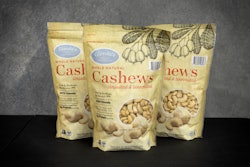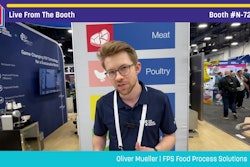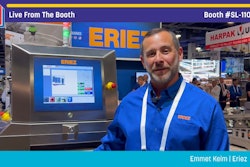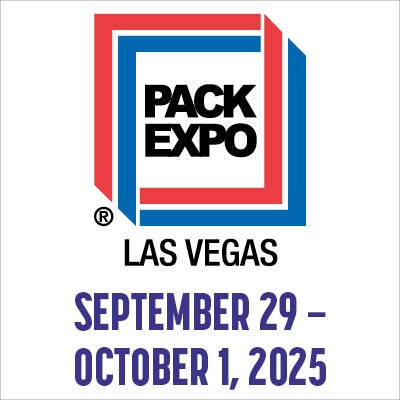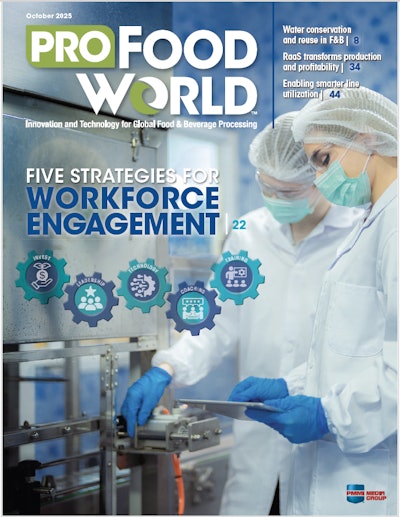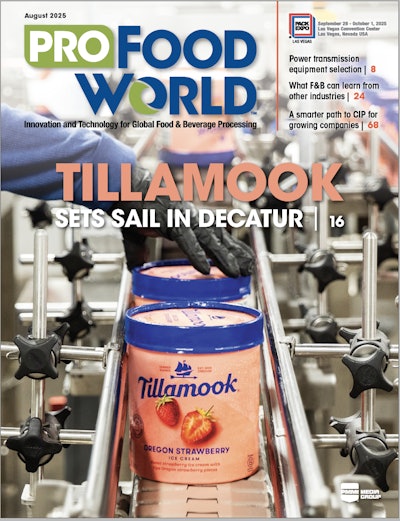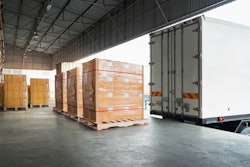End-of-line (EoL) or tertiary packaging comprises the last operations performed in readying products for shipment. This packaging category varies based on the upstream packaging operations that precede it since each of the levels of packaging—primary, secondary, and EoL/tertiary—are sequential and interrelated.
Modern commerce is the result of mass marketing, mass production, and mass distribution. The last-mentioned part of that trio is made possible by EoL packaging. The outbound portion of supply chains connects product makers and their customers. Various intermediaries are involved (e.g., wholesalers, distribution centers, and retailers). Various functions are involved (e.g., transportation, material handling, and warehousing/storage). The productivity and efficiency of intermediaries and functions alike are impacted by EoL packaging.
EoL packaging assembles individual items into a unitized load that must remain intact until disassembled by a supply chain intermediary. Any unplanned disassembly—for example, caused by physical forces encountered within the supply chain—can result in product loss and damage. If such compromise renders the product unsellable, the consequences go beyond the forfeit of a sale; all imputed resources will have been squandered. A different consequence, potentially with lingering effects, is harm to the goodwill among supply chain members.
All packaging levels perform the functions of protection, communication, and convenience/utility. When we’re talking about protection, we mean both protection of the contents (as described above), and protection of the people in proximity. By virtue of its size and weight, a compromised unitized load poses a physical danger. An example of the communication function as it relates to EoL packaging is an RFID tag that identifies it. Likewise, an example of the convenience function is as fundamental as the use of quality pallets.
Speaking of pallets, they represent a convenient segue into a discussion of some of the types of EoL packaging operations. The list is too long to exhaust in this article, so a small number are offered as representative.
Palletizing has been discussed variously, over the years, in this space. What’s worth additional mention is the avoidance of overhang and underhang. When the load overhangs the edges of the pallet (say, by more than an inch), the load is less given to stable handling and stacking. Underhang (the empty area between the edge of the load and the edge of the pallet) has ill effects not only on handling and stacking, but also on anchoring methods, such as stretch wrapping and strapping.
Stretch wrapping is the most-used method for containing a load (keeping the load intact). The requisite holding strength of the stretch wrap film is a function of such variables as type (cast or blown), gauge, degree of overlap, and tightness of wrap, among others.
The use of corrugated cases translates into such EoL operations as case set up and case packing. Case sealing can be achieved via tape, glue, or staple.
Bundling/wrapping operations are popular for certain applications, for example beverages in plastic bottles where the film is heat-shrunk. What’s achieved is an enrobed unit, having an opening (bullseye) at each end, that serves as handles.
Coding, labeling, and the means to print facilitate traceability and transparency throughout the supply chain. The information carried on EoL packaging is just as important as the information carried on a primary package.
Conveyor systems carry items between the EoL packaging stations, balancing their disparate output rates. This is achieved with the use of accumulation tables, as well as with speeds ranging from intermittent to constant.
Given the preceding rollcall, it should be apparent that some EoL packaging operations can be performed manually. Can be, however, does not mean, should be. So, what is the appropriate level of automation for EoL packaging? The short answer is: a level that does not impede the productivity and efficiency of upstream operations.
It’s no anomaly when upstream operations are more automated than EoL packaging operations. That’s because mass production mandates standardization to the extent that the items be indistinguishable from one another. That degree of sameness only can be had with automation. Even when upstream operations are devoted to a single product, volume can increase over time, putting pressures on EoL packaging that are best addressed through automation.
EoL packaging also is affected by marketing strategies. New product launches, product line extensions, and brand extensions are examples. As a result, a facility’s combined output can increase along with the diversity of the primary packaging. That favors EoL operations that can keep up with the speed and volume of upstream operations, while being flexible to upstream changeovers.
Never to be discounted are retail trends and requirements. The business models for big-box retailers like Costco, Sam’s Club, and BJ’s are reliant on stable palletized loads. On a different note, retailers of all sizes demand the benefits of retail-ready/shelf-ready packaging. Such packaging might deviate from an RSC corrugated case, and consequently, the EoL packaging for the former might differ from that of the latter.
Sustainably affects EoL packaging, too. A challenge is how to meet all the requirements imposed throughout the supply chain while practicing source reduction.
Next month’s article will be about EoL packaging machinery, and the challenges associated with their integration.
Sterling Anthony, CPP, consults in packaging, marketing, logistics, and human-factors. A former faculty member at the Michigan State University School of Packaging, his contact info is:100 Renaissance Center, Box-176, Detroit, MI 48243; 313/531-1875; [email protected].





